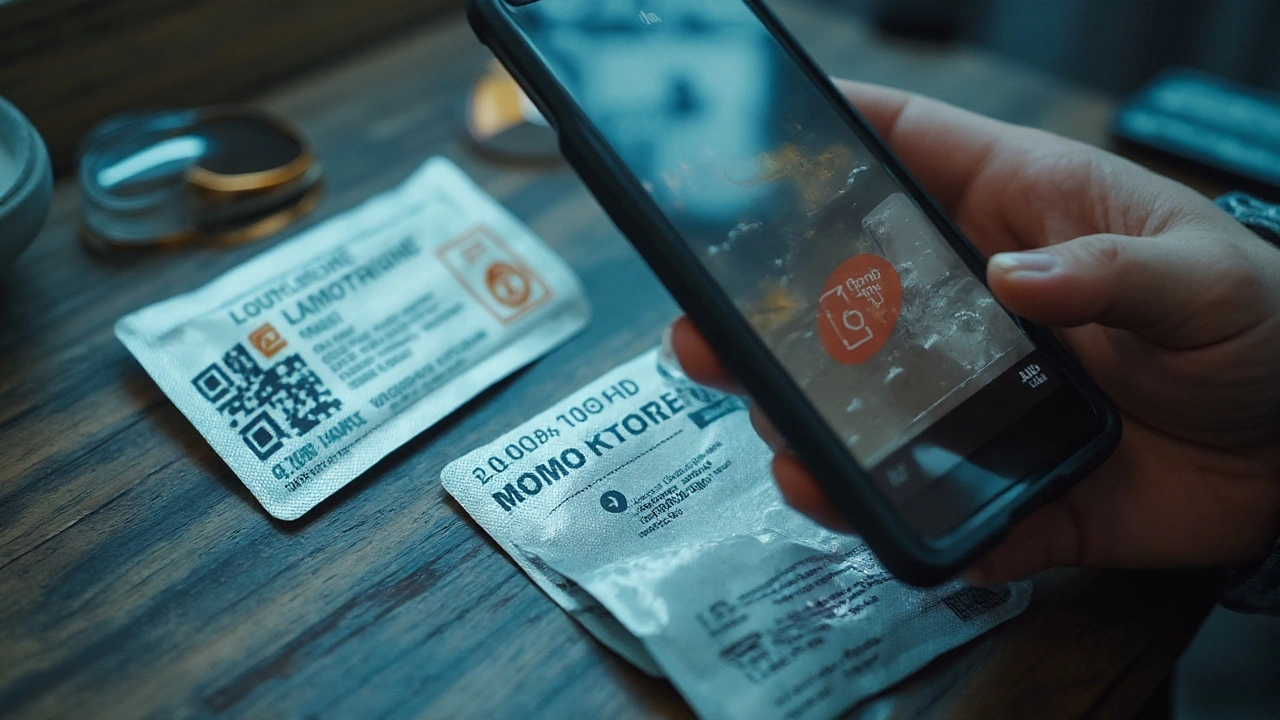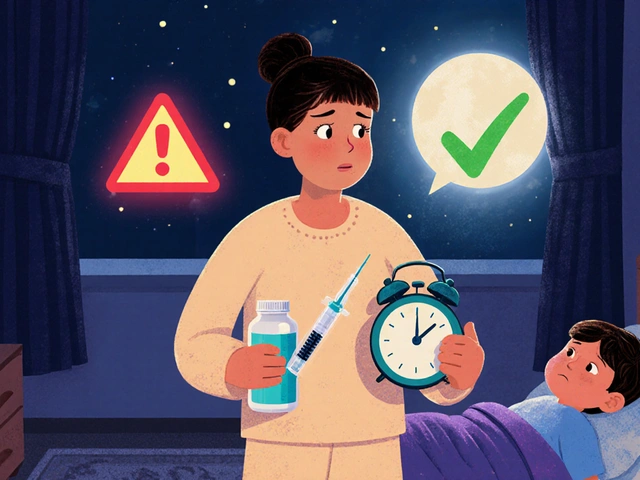If a website offers lamotrigine without a prescription, close the tab. In Australia, you can still buy generic lamictal online at a low price-but you need to do it legally, safely, and without risking your treatment. Here’s the simple truth: with a valid Australian script, most people can get generic lamotrigine at PBS-level pricing from reputable local online pharmacies. I’ll show you how to get the best deal in 2025, dodge the shady sellers, and keep your dosing stable so your brain doesn’t have to ride a rollercoaster.
What you’ll get here: a clear plan to order lamotrigine online with a script, a pricing playbook that actually works in Australia, a quick way to verify a legit pharmacy, and the key risks (like brand switching and rash) and how to handle them fast. I live in Sydney and I’ve shopped both in-store and online; the steps below are what I’d tell a mate who messaged me late at night asking for the cheapest safe option.
Exactly how to buy generic lamotrigine online in Australia (safely and legally)
First things first: lamotrigine is prescription-only in Australia (Schedule 4, per the Therapeutic Goods Administration-TGA). No legit Australian pharmacy will sell it without a valid script. The fastest path is an eScript from your GP, psychiatrist, or neurologist. You can still mail a paper script, but eScripts cut days off the process.
Here’s the short, clean path:
- Get your prescription ready: ask your prescriber for an eScript token (SMS or email). If you only have a paper script, scan or photograph it clearly.
- Pick a reputable Australian online pharmacy: look for a .com.au domain, a clear physical pharmacy location in Australia, and Quality Care Pharmacy Program (QCPP) accreditation. If they hide where they are or don’t ask for a script, walk away.
- Upload your script or enter your eScript token: follow the site’s prompt. You’ll usually choose the brand (go generic unless your prescriber says to stay on a specific brand), dose strength, and quantity.
- Confirm brand continuity: if you’re already stable on a brand, stick with it unless your prescriber gives the green light to switch. Anti‑seizure meds are sensitive to brand hopping.
- Check price, shipping, and timing: aim for PBS pricing if you’re eligible. Standard delivery is fine-lamotrigine doesn’t need refrigeration, just store it under 25°C away from moisture.
- Place your order: you’ll usually get an order number and a request to post the hard copy script later if you used a paper prescription.
How do you tell if the pharmacy is legit? Use this quick checklist.
- Asks for a valid Australian prescription.
- Shows a real, Australian physical pharmacy address and ABN on the site.
- Lists an on‑duty Australian-registered pharmacist for contact (name and credentials, not just “support”).
- QCPP accreditation badge or wording (run by The Pharmacy Guild of Australia).
- Medicine pages show TGA-approved brands and strengths available locally (25 mg, 50 mg, 100 mg, 200 mg).
- Clear returns and complaints policy compliant with Australian Consumer Law.
What you’re actually buying: lamotrigine (the active ingredient in Lamictal). In Australia you’ll see multiple generic brands (e.g., from Sandoz, APO/Teva, Sun Pharma). All generics approved by the TGA have to meet strict bioequivalence standards to the reference product (Lamictal). You’ll typically choose immediate‑release tablets. If your script mentions modified‑release, order exactly that-don’t guess.
Storage and handling are simple: keep it in the original blister, below 25°C, away from humidity. Don’t split doses unless your prescriber told you to or you’re using scored tablets as advised.
Brand switching note (read this, it’s important): many clinicians prefer patients with epilepsy to stay with the same brand to avoid small swings in blood levels. This is a known point in anti‑seizure care. If your pharmacy offers a different generic, check with your prescriber and keep the change consistent (and note it in your records). For bipolar maintenance, the same consistency helps with mood stability.
Who regulates what you’re doing? The TGA regulates medicines and their quality; the PBS (Department of Health and Aged Care) sets subsidy rules and prices; pharmacists are registered under AHPRA; the Quality Care Pharmacy Program audits pharmacy practice standards; and the Australian Digital Health Agency runs the eScript framework. Those are the names you want to see referenced on a pharmacy’s site.

What “cheap” really means in 2025: pricing, PBS, and saving without cutting corners
“Cheap” shouldn’t mean mystery pills from overseas. In Australia, “cheap” usually means PBS-level pricing for a TGA-approved generic from a fully licensed pharmacy. Here’s how to get there.
Know your script type:
- PBS script: if you qualify, you pay the PBS co‑payment. Some brands may carry a small “brand premium”; ask for a brand without a premium if you’re price sensitive.
- Private script: you pay the full private price set by the pharmacy. This varies, so it’s worth comparing a few reputable sites.
- Concession card holders: you’ll usually pay the concession co‑payment on PBS scripts. Keep a tally for Safety Net tracking.
Pack sizes and strengths you’ll see online: 25 mg, 50 mg, 100 mg, 200 mg; common pack counts are often 56 or 60 tablets for immediate‑release, depending on brand and PBS listing. Your prescriber’s titration schedule matters a lot for early months, so don’t buy bulk ahead of the plan.
Quick ways to reduce your cost without risking safety:
- Ask for “no brand premium” at checkout: if the site lists multiple brands, pick one without a premium. The active ingredient is the same.
- Use PBS if you qualify: check your script says “PBS” and the indication meets PBS rules (epilepsy commonly does; your prescriber will know). If your condition isn’t PBS-eligible, you’ll be on a private script.
- Compare 2-3 reputable Australian online pharmacies: private prices vary. Stick to .com.au, script‑required sites.
- Price matching: many big Aussie pharmacies will match if you show another legitimate local competitor’s price for the same brand and pack.
- Consolidate with other meds: some pharmacies give free shipping over a threshold. Combine orders you already need, so you don’t chase unsafe “free shipping” from suspicious sites.
Rule of thumb to spot good value: divide total price by tablet count to get the per‑tablet cost. If you’re paying a PBS co‑payment for ~56 tablets, the per‑tablet figure should be low and stable. Private prices will vary more, but generics should still be significantly cheaper than branded Lamictal.
Why you shouldn’t import from overseas for “super cheap” pills: under the TGA’s Personal Importation Scheme, you can import up to a 3‑month supply for personal use if you have a valid prescription and meet strict rules. But quality and supply chain are on you, not a local pharmacist; Border Force can stop your parcel; and you won’t get PBS subsidies. For a medicine that affects seizure control and mood stability, the cheap‑cheap route can get expensive fast if something goes wrong. Local TGA‑approved supply is the safer play.
What about “generic vs Lamictal” performance? TGA‑approved generics are bioequivalent to the brand. That said, if your prescriber has marked “no brand substitution,” follow that. If you do switch, keep it consistent thereafter and let your prescriber know so they can watch for any dose‑response changes.
| Option | Pros | Cons | Best for |
|---|---|---|---|
| TGA‑approved generic (PBS) | Lowest subsidised price; widely available; same active ingredient | Brand premiums if you pick a premium brand; need a valid script | Most patients on PBS‑eligible indications |
| Branded Lamictal (PBS) | Reference brand; comfort if already stable on it | May cost more due to brand premiums; availability varies | Patients told to avoid switching |
| Private script generic | Available even if PBS criteria not met | Price varies by pharmacy; no PBS subsidy | Non‑PBS indications or private prescriber |
| Overseas import | Sometimes lower sticker price | No PBS; quality/supply risk; possible seizure by Border Force | Only if you fully understand TGA import rules and accept risks |
Quick Australian context, 2025:
- Authority: therapeutic quality is overseen by the TGA; prices/subsidies by the PBS.
- PBS co‑payment caps apply; brand premiums are extra if you choose a premium brand. Your pharmacist will tell you before you pay.
- Safety Net: if you hit the annual threshold, your out‑of‑pocket cost drops. Keep receipts to track it.
Two common shopping paths I see:
- You’re new to lamotrigine: first month costs more because you might need multiple strengths for titration (e.g., 25 mg and 50 mg). Order exactly what your prescriber planned; don’t try to “save” by buying a month of a higher strength and splitting without instructions.
- You’re stable and refilling: stick to your existing brand and strength, buy the PBS pack size your prescriber wrote, and compare 2-3 reputable pharmacies for the best price + shipping combo.

Risks, red flags, and the smart way to stay stable
Lamotrigine works well for many people with epilepsy or bipolar disorder, but it needs respect. The biggest safety issues aren’t price; they’re dosing changes, brand switching, and rare but serious skin reactions.
Key medical risks to know (so you can act quickly):
- Rash, including Stevens-Johnson syndrome (rare but serious): any new rash, especially with fever, mouth/eye sores, or widespread redness-stop the medicine and seek urgent care. Don’t wait it out.
- Titration is not optional: starting doses are low and increase slowly. This reduces rash risk and side effects. Follow the schedule your prescriber gave you.
- Interactions matter: valproate (sodium valproate) can raise lamotrigine levels; carbamazepine can lower them; combined hormonal contraceptives can reduce lamotrigine levels (and stopping them can raise levels). Tell your prescriber about all meds, including the pill, patches, and St John’s wort.
- Brand consistency: if you change brand or formulation, note it and watch for changes in symptoms or side effects. Let your prescriber know you switched.
- Pregnancy and breastfeeding: talk to your obstetrician/neurologist/psychiatrist early. Doses may need adjusting during pregnancy. Don’t change anything without advice.
Simple red‑flag filter for rogue websites:
- “No prescription needed”-illegal for lamotrigine in Australia.
- Ships from overseas with no Australian contact details-quality risk and likely no PBS.
- Prices far below Australian PBS/private norms-counterfeit risk.
- Plain, unbranded bottles or foreign‑language blisters with no TGA labelling.
- No pharmacist contact, no ABN, vague refund policy-just don’t.
How to switch to a cheaper generic without drama:
- Ask your prescriber if brand substitution is okay for you. If yes, switch once and stick with the new brand.
- Time the switch on a quiet week: avoid travel or big work deadlines. Pay attention to seizure control or mood changes.
- Keep a quick log for two weeks: dose time, any symptoms, and any missed doses. Share with your prescriber if anything changes.
- Avoid further switches: price differences between generics are usually tiny; stability is worth more.
Online vs local pharmacy-how to choose today:
| Channel | Why choose it | Watch outs |
|---|---|---|
| Online (Australian, script‑required) | Convenience, easy price comparison, home delivery | Shipping time; post your paper script if needed |
| Local pharmacy | Immediate supply, face‑to‑face counselling, easy brand continuity | Price can be a bit higher; fewer brands on shelf |
Credibility context for peace of mind: The TGA sets bioequivalence requirements; PBS lists subsidised items and co‑payments; NPS MedicineWise provides patient‑friendly medicine advice; the Australian Digital Health Agency supports eScripts; and the Quality Care Pharmacy Program audits pharmacy standards. These are the institutions you can trust in Australia in 2025.
Ethical call to action: get a valid Australian script, choose a QCPP‑accredited online pharmacy, pick a no‑premium generic unless your prescriber says to avoid switching, and stick with it. That’s the cheapest safe path.
Mini‑FAQ
- Is Lamictal the same as lamotrigine? Lamictal is the brand; lamotrigine is the active ingredient. TGA‑approved generics are bioequivalent to Lamictal.
- Do I need a prescription to buy online in Australia? Yes. Any site selling without one is breaking Australian law.
- Can I import from India or the US? Only under the TGA Personal Importation Scheme rules with a valid prescription-and you lose PBS pricing, plus you take on quality and seizure risks at the border.
- Why do pharmacists warn about switching brands? With anti‑seizure meds, small level changes matter. If you switch, keep it consistent and loop in your prescriber.
- What strengths are common? 25 mg, 50 mg, 100 mg, 200 mg immediate‑release tablets are widely stocked. Follow your titration plan.
Next steps
- Ask your doctor for an eScript that matches your current brand/strength and whether brand substitution is okay.
- Shortlist two or three Australian, QCPP‑accredited online pharmacies. Confirm they require a script.
- Compare total cost (med + shipping) and pick a no‑premium generic if allowed.
- Order, then store the tablets under 25°C, in the original blister. Set reminders to avoid missed doses.
- Note the exact brand you’re taking in your health app or diary so you don’t switch by accident later.
Troubleshooting
- Out of stock online: call or message the pharmacy to check delivery ETA; ask for the same brand at a local partner store; or ask your prescriber about a safe temporary brand (then stay on it).
- Price is higher than expected: confirm if your script is PBS; ask for a no‑premium brand; compare another reputable Australian pharmacy; check if you’re close to the PBS Safety Net threshold.
- Rash or new symptoms after a brand change: stop and seek medical advice immediately for rash; for milder changes, contact your prescriber the same day and document what changed.
- New meds started (e.g., contraceptives, valproate, carbamazepine): tell your prescriber-lamotrigine levels may shift and your dose might need a tweak.
- Moving or traveling: bring enough tablets for the whole trip; don’t switch brands mid‑travel; keep tablets in carry‑on, in original blisters with your script.
Sources you can trust for details: Therapeutic Goods Administration (TGA) for medicine safety and bioequivalence standards; Pharmaceutical Benefits Scheme (PBS) for subsidy rules and co‑payments; NPS MedicineWise for patient‑friendly guidance on lamotrigine; Australian Digital Health Agency for eScript info; Quality Care Pharmacy Program (QCPP) for pharmacy standards; Australian Border Force and the TGA Personal Importation Scheme for import rules.
If you stick to that playbook-valid script, Australian‑accredited online pharmacy, no‑premium generic when allowed, and no brand hopping-you’ll get lamotrigine at a fair price without gambling on quality. That’s the kind of “cheap” that actually pays off.







14 Comments
Victoria Guldenstern August 22, 2025
Big practical thing to lock in first is the prescription rule, no shortcuts allowed.
Lamotrigine is one of those meds where the bureaucracy actually helps keep you safe, so pretending you can dodge it is not clever, it's risky. The checklist in the post is the kind of straight talk people need when they're sleep deprived and panicking about refills. Keep the script digital if you can, because the eScript token will save you days and stress. If you're stable on a particular generic, write it down and treat that brand like part of your routine. Pharmacists will humbly lecture you about brand switching for a reason, and yes, that small variance can matter for mood and seizures. The import route looks tempting to someone who hates paying, but the TGA and border rules are real problems waiting to happen. If cost is the issue, use the PBS pathway or ask the prescriber to code the script for PBS where appropriate. When titrating, do not improvise with doses or tablet splitting unless the tablet is scored and your clinician said so. Keep meds in original packaging and track the brand so you don't accidentally swap in a different generic next refill. If a pharmacy site hides a physical address, that’s the site to avoid immediately. Document any brand change and note symptoms in a simple log for two weeks, that info is gold for clinicians. If a rash appears, treat it as urgent and stop immediately, because the rare cases are the ones that become tragic. For people travelling, carry the script with you and keep meds in carry on to avoid claims of lost or damaged parcels. This isn't a drama about labels, it’s about predictable blood levels and not being forced into an emergency consult because someone chose the cheapest mystery pill. Follow the playbook: script, QCPP accredited pharmacy, no-premium generic unless told otherwise, and consistent brand thereafter.
Darius Reed August 27, 2025
Solid practical tips and the bit about eScripts saving days is legit, I almost cried the day mine arrived as an sms cause I was low on supplies.
Also, definately double check the pharmcy ABN stuff, I once nearly pulled the trigger on a dodgy site cause the price was bonkers cheap and the spelling was wonky. Not worth the risk for a med that controls your headspace.
Jason Layne September 1, 2025
Offshore vendors are a known vector for supply chain manipulation and opaque sourcing, and that needs to be said plainly.
When pills cross multiple intermediaries the traceability that regulators rely on evaporates, and that is not hypothetical. The post correctly highlights the legal frameworks that exist in Australia to maintain accountability, and those frameworks are exactly what prevent counterfeit batches from circulating unchecked. Every time someone bypasses the system for a marginal price cut they externalise the quality risk onto themselves and onto clinicians who must then troubleshoot erratic responses. Transparency of manufacturer and batch numbers matters when adverse events are reported, and foreign supply chains often do not provide that level of detail. For chronic conditions, stability in formulation is part of preventing emergency care episodes. The PBS and TGA exist for a reason, and invoking personal import schemes without accepting the consequences is reckless. If the local supply is interrupted, escalate through the prescriber and registered pharmacists rather than resorting to anonymous vendors. This is not alarmism, it is adherence to evidence-based stewardship of medications.
Victoria Unikel September 6, 2025
Good to hear the post tells people not to buy without a script, that's the real deal.
Also the bit about storing under 25C, keep it dry, saved me once when my apartment turned into a sauna for a week and I forgot the meds in the bathroom cabinet. Took me ages to notice the blister got foggy.
Lindsey Crowe September 11, 2025
Nice how the post separates "cheap" from "stupid cheap" without sounding preachy.
People treat meds like tech gadgets and try to squeeze pennies while ignoring that a seizure or a bad rash will cost far more than any online coupon. Just because something is low price doesn't mean it's low risk. Keep the drama to Netflix and the meds to licensed pharmacists.
Rama Hoetzlein September 16, 2025
Important call outs and the stern tone is deserved, some folks act like laws are mere suggestions :)
Also saying the TGA and PBS are the places to trust is exactly correct, they are not optional here. People importing packets from random sites are basically rolling the dice on their own nervous system, and that is wildly irresponsible. Keep receipts, keep pack info, and be loud with your prescriber if anything changes after switching brands. If anyone tries to sell you without a script, laugh and close the tab, then report the site if you can. :)
Lorena Garcia September 21, 2025
Good practical additions on interactions and travel planning are worth repeating because they’re the details that trip people up.
If someone is on combined hormonal contraception they need to record when it started or stopped relative to lamotrigine adjustments to keep the clinician in the loop. Also, doing a refill comparison between two accredited pharmacies for the same brand almost always saves more than chasing random discounts off unverified sellers. Small administrative steps often prevent bigger clinical headaches later, so take the extra five minutes to confirm PBS status and brand premium flags at checkout. And when you switch brands, keep a short symptom log for two weeks so you can objectively report any drift rather than guessing at memory.
Dietra Jones September 26, 2025
Bookmark saved.
Bill Bolmeier October 1, 2025
Love the no-nonsense checklist format, that's how you make a lifesaving process seem doable.
People often panic and then pick the worst option out of hurry, so the calm steps are actually motivational. Keep the script digital, pick accredited local pharmacies, and log brand changes - simple habits that prevent messy outcomes. If you start feeling off after a switch, document and call your clinician right away, don't shrug it off.
Hannah Seo October 7, 2025
Clinician perspective: document everything and maintain open lines with your prescriber, that simple practice prevents mismanagement.
When prescribing, clinicians should note brand substitution preferences on the script to guide pharmacists and patients. If a patient is titrating, the physician should specify the exact strengths and whether tablet splitting is permitted, and that instruction should be captured clearly in the eScript token. Pharmacists can aid adherence by counseling on storage, expected side effects, and interactions at the point of dispensing, and reputable online pharmacies will offer that same counseling via telephone or secure messaging. If a rash appears, immediate cessation and urgent evaluation is standard protocol, and this must be emphasized on every refill where titration is recent. For patients of childbearing potential, coordinate with obstetric services early because pregnancy alters pharmacokinetics and dosing adjustments are common. Maintain examples of brand names and manufacturers in clinical notes so any downstream substitution can be traced. In short, good documentation and clear communication between patient, prescriber, and pharmacist is the backbone of safe generic use.
Darius Reed October 12, 2025
Quick follow to the documentation bit, keep a photo of the blister with lot number on your phone when you get a new pack, trust me it's handy when shops mix up brands.
Also yeah my thumb slipped and typed "pharmcy" once when messaging a mate about this and it actually made the whole exchange funnier than it should of been.
Rama Hoetzlein October 17, 2025
Pushback to the conspiracy vibes, clear supply chain transparency matters and it's not some big secret plot, it's documented and auditable. :)
We need to call out dodgy importers as real risks but not spiral into panic, the post already lays out the actual rules and that is what people should follow. Being loud with regulators about suspect sites is more productive than doomscrolling about shadowy networks.
Lorena Garcia October 22, 2025
Following the clinical advice, also add a reminder in your phone to log dose times for the first two weeks after a switch to catch small changes early.
That log is a low-effort habit that gives your prescriber actionable data instead of vague statements about feeling 'off balance'.
Bill Bolmeier October 27, 2025
And adding to the price conversation, pushing for PBS when eligible is the practical move, not shameful
People should be proactive about asking for no-premium brands at checkout and pharmacists generally help with that if you ask nicely. Keep your receipts for the Safety Net, and don’t let the fear of paperwork push you to sketchy sellers.